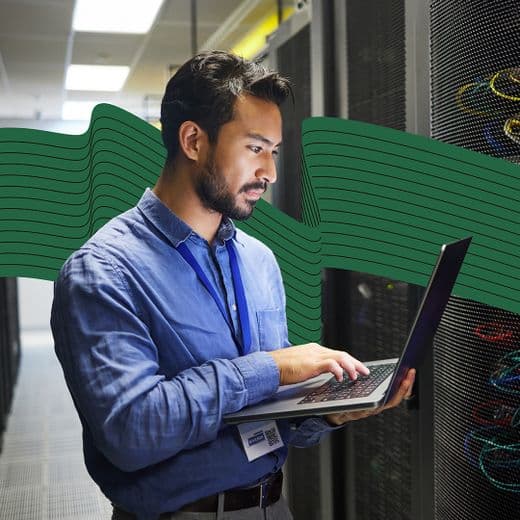Dan Tynan |
The future of work is evolving at light speed — and if you don't believe us, just ask ChatGPT.
Workforce planning was already a challenge for overextended HR departments before the arrival of generative AI. Making smart decisions about what roles to hire for and which employees to upskill has always been hampered by a dearth of actionable data.
Today, two-thirds of enterprises are actively implementing gen AI tools into their daily workflows. And as bots take on more tasks currently performed by humans, anticipating workforce needs becomes even harder. Researchers at the University of Pennsylvania predict that 80 percent of American workers will have 10 percent of their jobs taken over by AI, while the rest are likely to see at least half of their current tasks automated.
In three to five years, jobs will look different than they do today. Organizations need better insights as to how workforce needs are changing, and how they can reskill internal talent to fill some of those roles, says Alexandra Adams, senior product marketing manager at Guild.
"HR leaders have a desire to make data-driven decisions that support the business' growth," she says. "With the pace of change, new solutions can help equip them with the information they need to have those conversations."
It's a tough nut to crack, but it's also a golden opportunity. If HR can use talent analytics to help organizations achieve their transformation goals, they'll become true strategic partners in driving the business forward.
A shift from skills to tasks
Assessing the skills your organization has in house, let alone those they'll need over the next three to five years, is unfortunately still more art than science for many organizations, says Matthew Daniel, senior principal for talent strategy and mobility at Guild.
Inferring skills based on someone's job description doesn't tell you how proficient they are at them, he adds. It also doesn't reveal other talents a person might possess that could prove useful in the AI era.
And while there's plenty of data available from government agencies, job postings, and LinkedIn profiles that provide clues as to what new roles companies are seeking to fill, this data only tells you where the market is now, not necessarily where it will be a few years from now.
"The skills everyone in software engineering will need to know in three to five years might just be a glimmer in the eyes of some startup today," says Daniel. “Organizations will need to continually re-assess their needs and ask, ‘What is the market telling us now?’”
Predicting which skills will be vital in an AI-driven future — and which will become obsolete — is the challenge facing every HR leader today. Adams says HR teams need to work with business partners to break individual jobs down into discrete tasks, and then determine which of those tasks could be improved by AI.
"For every role there's a potential for augmentation or automation, it's just a matter of percentage," says Adams. "The action employers should take now is upskilling their personnel on AI to help harness its power, while keeping the human in the loop. This will help employees transition to the in-demand jobs organizations will need in the future."
But taking the pulse of your current workforce is equally important. Organizations should ask employees what repetitive but necessary tasks are keeping them from being more productive, suggests Lisa Simon, chief economist at Revelio Labs, a workforce intelligence firm. That will provide clues as to where automation will have the greatest impact.
"What are people spending time on, and where are they losing time?" she says. “You should start by understanding people’s work activities and from there understand which tasks can be better done by AI, and which ones humans need to double down on. That will help you quantify the productivity gains you'll get from adopting AI."
Re-imagining work, one job at a time
But before organizations start breaking jobs into tasks, they need to first re-imagine what jobs will look like in a gen AI-centric world, advises Paul Daugherty, chief technology and innovation officer for Accenture, and co-author of Human + Machine: Reimagining Work in the Age of AI.
"If you look at tasks without first thinking about how you change the work, you're going to automate the wrong things," he says.
For example, using gen AI in a call center can slash the cost of delivering customer support. But the technology can also do things less intelligent systems can't – like identifying positive or negative customer sentiment, then capturing information to inform new product design.
"If your only goal with gen AI is to make the call center more efficient, you'll miss that opportunity," he adds.
The re-imagination process requires bringing together leaders in HR, legal, IT, and business units to talk about the larger goals of the organization and how AI can help meet them. It also requires strong top-down support, notes Daugherty.
"You need C-suite leaders to articulate what areas of the business they want to prioritize, rather than just applying technology in individual use cases," he says.
Storytellers needed
As AI takes on more technical tasks, softer skills may rise in importance. According to a March 2024 survey by talent discovery platform TestGorilla, 89 percent of employers say skills such as communication, teamwork, adaptability, and time management are more important than they were five years ago.
"We'll see more companies looking for complementary skills that AI isn't able to provide, such as leading teams, overseeing projects, ensuring team cohesion, and managing the social aspects of work," says Revelio's Simon.
And while AI is far better than humans at analyzing and organizing huge volumes of data, it's not nearly as good at weaving that information into a narrative that motivates people, notes Anthony Onesto, chief people officer for consumer insights firm Suzy.
"I've had managers say to me, 'We don't need more data analysts, we need people who can tell stories'," he says. "The data is important, but the story is even more important."
As AI ripples through the workforce, the changes it brings will elevate the role of HR within organizations, argues Deborah Perry Piscione, CEO of the Work3 Institute and co-author of the forthcoming book, "Employment is Dead: How Disruptive Technologies are Revolutionizing the Way We Work."
"It will be crucial for real humans to guide organizations as we navigate the AI era," she says. "HR leaders are poised to become the cornerstone of company culture, identifying skills gaps, and reshaping work paradigms."
Talent analytics can unlock that next level, enabling HR leaders to play a more strategic role within their organizations, adds Daniel.
“In many HR departments, strategic workforce planning is still a bit of an enigma,” he says. “Talent intelligence platforms can tell you which skills you have in abundance, which ones the organization still needs, and how you can reallocate talent and reskill people to meet your business goals.”



